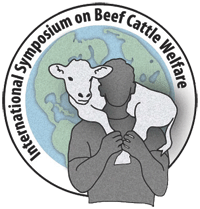 Pain Management:
Pain Management:
What's In It For Me?
Iowa State University researcher explains the economic benefits, including market access, of providing pain management.
Only one out of five veterinarians reported routine analgesic (pain management) use at castration, though admittedly, there are no analgesics labeled for cattle in the United States, says Hans Coetzee. The Iowa State University professor explained some of the economic benefits and research methods of providing pain management to cattle during castration to participants of the 2012 International Symposium on Beef Cattle Welfare, which was June 5-7 in Saskatoon, SK.
While there is no analgesic labeled for use in cattle in the United States, other drugs may be used extra labelly, provided adherance to the guidelines in the Animal Medicinal Drug Use Clarification Act is maintained. Granted, establishing meat and milk withdrawal periods is especially challenging. Oral meloxycam is the only approved medication and also the only version of meloxycam allowed in the United States.
By using oral meloxycam for pain management, producers can reap economic benefits by gaining access to more markets (like the European Union). The public believes pain management is the right thing to do, and, therefore, analgesic use is a good offense. Niche marketing is available because of welfare labeling, such as Humane Farm Animal Care (HFAC), and pressure is reduced from animal rights groups and possible legislative scrutiny. Pain management also maintains consumer confidence in beef.
Coetzee's research also studies whether there are health and performance benefits from pain management. The first study Coetzee shared examined performance of steers and bulls that were castrated after feedlot arrival. Combining changes in average daily gain (ADG), pull rates (calves pulled from pens to go to the sick pen), use of microbials, and bovine respiratory disease morbidity, the steers castrated prior to arrival earned $52.18 per head more than the bulls castrated after arrival. He said that on a 550-pound (lb.) calf, the $52.18 difference comes out to $9.48 per hundredweight (cwt.).
Another study examined results of providing sodium salicylate (aspirin) in drinking water 24 hours prior to and 72 hours after castration and dehorning. He shared that only 20% of regular aspirin provides actual pain relief to the animal because of its limited bioavailability to the ruminant animal, and 80% is medicating bacteria and the environment. Sodium salicylate is about 60% bioavailable, so it provides more direct pain relief to the ruminant animal in the soluble form.
The calves that received the aspirin had significantly greater ADG, but the aspirin had a bitter taste, calves didn't like it, and they stopped drinking. He suggested looking into the effects of analgesic given prior to 24 hours before castration and dehorning.
Oral meloxycam has been shown to have a positive effect after dehorning and castration, and differences in behavior showed that calves felt better after the procedures compared to controls. Calves treated with meloxycam spent more time at the grain bunk and the control calves spent more time at the hay bunk.
Other studies have shown, he concluded, that calves without pain management will show compensatory growth later, but pain management gives more health benefits and marketing opportunities, in addition to performance.
For additional coverage of the 2012 International Symposium on Beef Cattle Welfare, view the presentation summaries in the API Virtual Library. Go directly to the page at http://bit.ly/MsqCPv or drill down from www.api-virtuallibrary.com following this path: Meeting Sites → Other Industry Meetings → News Coverage → Click here.













